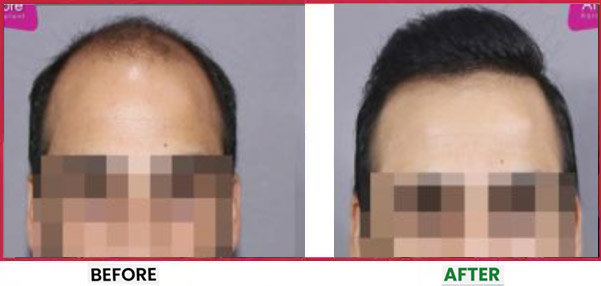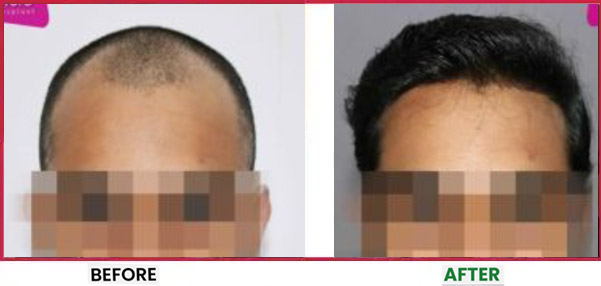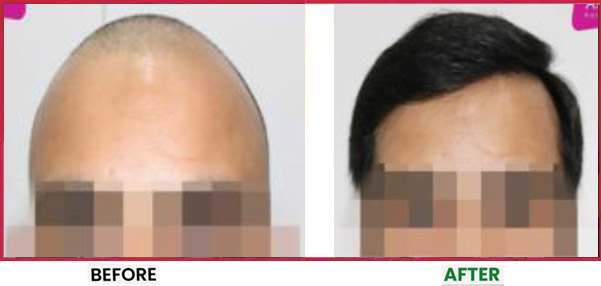Treatments
Contact Us
- 1ST FLOOR, FORUM BUILDING, RAGHUVANSHI MILLS COMPOUND, LOWER PAREL, MUMBAI 13.
- 02248253545
- +917240012002
- +917240013002
- hello@skuccii.com
we are open 7 days a week
10:00 AM TO 7:00 PM
Are you tired of seeing more hair on your pillow than on your head? If you’re nodding along, you’re not alone. Hair loss can be a distressing experience, affecting self-esteem and confidence. But here’s the good news: hair transplant procedures have come a long way, offering effective solutions to restore your crowning glory.
A] What is a Hair Transplant?
Hair transplant also known as hair implants, is a surgical procedure that involves moving hair follicles from one part of the body (usually the back or sides of the scalp) to areas experiencing hair loss. This technique is primarily used to treat male pattern baldness but can also be effective for women experiencing thinning hair. It also results in natural hair growth, providing a permanent solution to hair loss.
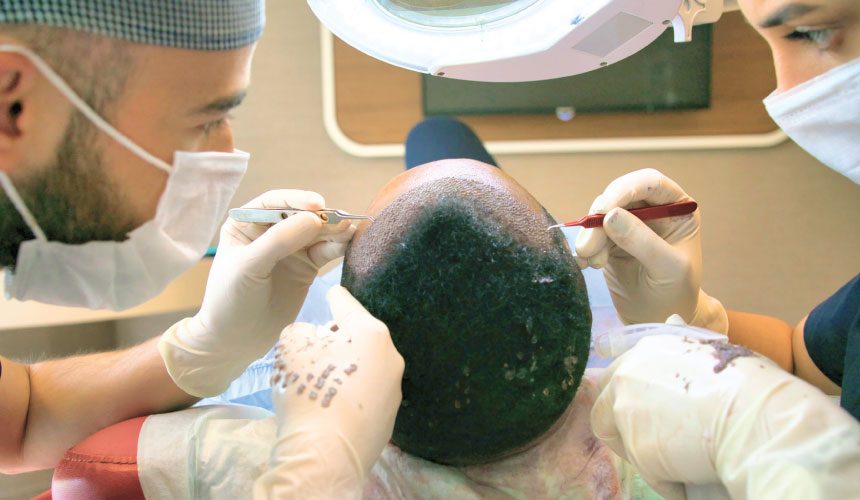
B] Hair Transplant Procedure Steps
Here’s a step-by-step overview of what you can expect during hairline transplant procedure:
- Consultation: A thorough assessment of your hair loss pattern, medical history, and expectations.
- Preparation: The donor and recipient areas are cleaned and numbed with local anesthesia.
- Extraction: Hair follicles are harvested from the donor area using the chosen technique (FUT or FUE).
- Graft Preparation: The extracted follicles are carefully prepared for transplantation.
- Implantation: The prepared grafts are implanted into the recipient area, following the natural hair regrowth.
- Post-Procedure Care: Instructions are provided to ensure proper healing and optimal results.
Looking for the best hair clinic near me?
C] Types of Hair Transplant Procedures
1. Follicular Unit Extraction (FUE)
FUE hair transplant involves extracting individual hair follicles from the donor area and implanting them into the recipient area. This technique leaves minimal scarring and offers a quicker recovery time. It works wonders for hair restoration.
2. Ultra-Precision, High-Density FUE
An advanced form of FUE, this method focuses on achieving higher hair density and precision, ideal for those seeking a more voluminous result.
3. Mega Hair Transplant
Suitable for extensive hair loss, this procedure transplants a large number of grafts in a single session, providing comprehensive coverage.
4. Eyebrow and Beard Transplants
For individuals looking to enhance or restore eyebrow and beard hair, specialized transplant techniques are employed to achieve natural-looking results.
At Skuccii Supercliniq, we are committed to providing personalized new hair growth solutions with state-of-the-art techniques. Our experienced team ensures that each patient receives the highest standard of care for optimal results.
D] Hair Transplant Cost
The cost of a hair transplant can vary based on several factors, including the extent of hair loss, the number of grafts required, and the technique used. At Skuccii Supercliniq, we offer competitive pricing and personalized hair loss treatment plans to suit your needs and budget.
It’s essential to choose a reputable clinic with experienced professionals to minimize these risks.
E] Hair Transplant Side Effects
While hairline transplants are generally safe, some individuals may experience temporary side effects, including swelling or discomfort in the treated area, itching or scabbing as the scalp heals.
Serious complications are rare but can include infection or scarring. Choosing a reputable clinic with experienced professionals minimizes these risks in case of hair regrowth for men and women.
f] Advantages of Hair Transplant
Opting for a hair transplant offers several benefits:
- 1. Natural Results: Since your hair is used, the results look and feel natural.
- 2. Permanent Solution: Transplanted hair continues to grow for a lifetime.
- 3. Improved Appearance: Restores a youthful look and boosts self-confidence.
- 4. Low Maintenance: Once healed, transplanted hair requires no special care.
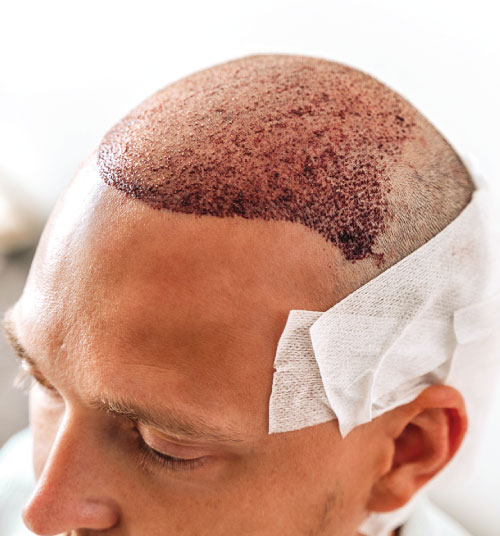
G] Hair Transplant Aftercare
Proper aftercare is crucial for the success of your hair transplant. Here are some tips for post hair transplant.
- Avoid Touching: Refrain from touching or scratching the transplanted area.
- Gentle Washing: Follow your surgeon’s instructions on when and how to wash your hair.
- Avoid Strenuous Activities: Limit physical activities that may cause sweating for at least a week.
- Protect from Sun: Keep the scalp protected from direct sunlight.
- Follow-Up Appointments: Attend all scheduled check-ups to monitor progress.
Skuccii Supercliniq is one of the best hair transplant clinics in Mumbai thanks to its use of ultra-precision FUE, mega sessions, and high-density transplant techniques. Our team of experienced dermatologists ensures natural-looking, permanent hair restoration with minimal scarring.
If you’re considering a hair transplant, our team at Skuccii Supercliniq is here to help you every step of the way. Contact us today to schedule a consultation and take the first step towards restoring your hair and confidence.
H] Hair Transplant FAQs: Regaining Your Confidence!
Hair transplants are designed to be a long-lasting solution for hair loss. The transplanted hair follicles are typically resistant to balding and can continue to grow for many years. With proper post-hair transplant care and maintenance, including following the recommended hair transplant aftercare guidelines, the results can be permanent. However, it’s important to note that natural hair loss may continue in untreated areas, so ongoing hair loss treatment may be necessary to maintain overall hair density.
The hair transplant procedure is generally well-tolerated. Local anesthesia is administered to numb the scalp during the hair transplant surgery, minimizing discomfort. Patients may experience mild soreness or tightness in the scalp for a few days post-procedure, but this can typically be managed with over-the-counter pain relievers.
Following the hair transplant aftercare instructions provided by your hair clinic near you will aid in a comfortable recovery.
In hair transplant terminology, a graft refers to a unit containing 1 to 4 hair follicles. Therefore, 3000 hairs would equate to approximately 1000 to 1500 grafts, depending on the number of hairs per graft. This estimation can vary based on individual hair characteristics and the specific goals of the hair restoration procedure.
Stage 3 hair loss, characterized by a noticeable recession at the temples, can be addressed with various hair loss treatments. Options include medications, lifestyle changes, and surgical interventions like hair implants. Early intervention is crucial; consulting with a hair restoration specialist can help determine the most effective approach for hair regrowth.
The optimal age for a hair transplant varies per individual, but many experts recommend waiting until at least 25 years old. By this age, hair loss patterns are more established, allowing for a more accurate assessment and planning of the hairline transplant.
However, suitability depends on factors like the extent of hair loss and overall health, so consulting with a hair transplant clinic near you is advisable.
Yes, it’s common to experience temporary shedding of transplanted hair, known as “shock loss,” within the first few weeks post-procedure. This is a normal part of the hair growth cycle. New hair growth typically begins within a few months, leading to natural hair growth in the transplanted areas. Adhering to post-hair transplant care guidelines will support this process.
Seven days post-hair transplant, you may notice scabbing and redness in the treated areas. These are normal signs of healing. It’s important to follow your hair transplant aftercare instructions, which may include gentle washing and avoiding strenuous activities.
By this time, most patients can resume non-strenuous daily activities, but always consult with your hair clinic for personalized advice.
Proper sleeping posture is important after a hair transplant. For the first few nights, it’s recommended to sleep on your back with your head elevated using pillows.
This position helps reduce swelling and prevents pressure on the transplanted areas, promoting optimal healing and hair regrowth.
While hair transplants are generally safe, potential risks include infection, bleeding, scarring, and unnatural-looking hair growth if not performed correctly. Choosing a reputable hair clinic near you with experienced professionals minimizes these risks.
Discussing potential side effects and complications with your surgeon before the hair transplant procedure is essential for informed decision-making.
The best hair transplant technique depends on individual needs and hair loss patterns. Common methods include Follicular Unit Extraction (FUE), Follicular Unit Transplantation (FUT), and Direct Hair Implantation (DHI).
Each has its advantages; for instance, FUE is minimally invasive with quicker recovery, while FUT may be more suitable for extensive hair loss. Consulting with a hair restoration specialist will help determine the most appropriate method for achieving natural hair growth and desired results.
Before & Afters
